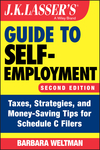Kiddie Tax: What is This?!
“Kiddie Tax” is the tax paid on a “child’s” investment income in excess of $2,500, at the marginal tax rate of their parents, for the 2023 tax year. The “Kiddie Tax” was introduced as part of the Tax Reform Act of 1986, in an effort to deter high income earning parents from transferring assets to their children as a way to avoid paying tax on the assets at the higher tax rate of the parents.
The “Kiddie Tax” applies to children under the age of 18 years old, and to full-time students ages 19 through 23 who do not provide more than 50% of their own support.
In what scenarios does a child have to file a tax return for tax year 2023?
- A child being claimed as a dependent with gross income, including earned and investment income, of more than $1,250.
- A child being claimed as a dependent with investment income over $400, and gross income exceeding $1,250.
In what scenarios does a child NOT have to file a tax return for tax year 2023?
- A child being claimed as a dependent with earned income ONLY less than the 2023 standard deduction of $13,850.
- A child with only interest and dividends may elect to report that investment income on the tax return of the parents. The parents may elect to complete Form 8814 to report the child’s income and compute the “kiddie tax”. Any amount over $2,500 would be included as “other income” on the parent’s return. Use caution however with this method as limitations using this method include increasing the AGI thus reducing certain credits and deductions.
How is the “Kiddie Tax” calculated?
If a child has unearned income over the $2,500 threshold for 2023, then they are subject to the “Kiddie Tax”. The child will compute their regular income tax on Form 8615, which will be attached to their tax return. However, a child cannot compute their income tax liability until the parents have completed their return, due to, the tax incurred on the unearned income of the child is based on the marginal tax rate of the parents.
On Part II of Form 8615, the excess over the $2,500 threshold is taxed at the marginal tax rate of the parents. After computing that “Kiddie Tax” on the unearned income over $2,500, on Part III of Form 8615, the child adds the “Kiddie Tax” to the tax calculated on their earned income. Finally, the sum of the “Kiddie Tax” and original tax is entered on the child’s Form 1040.



